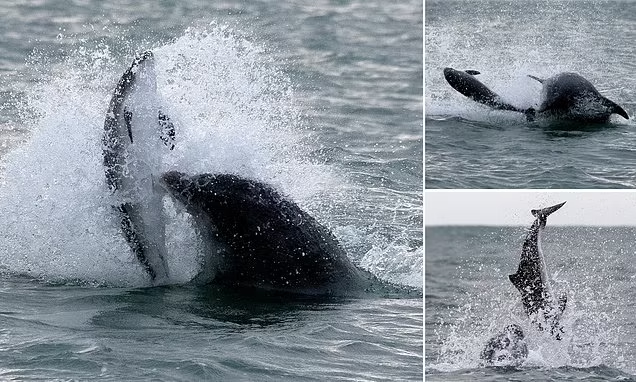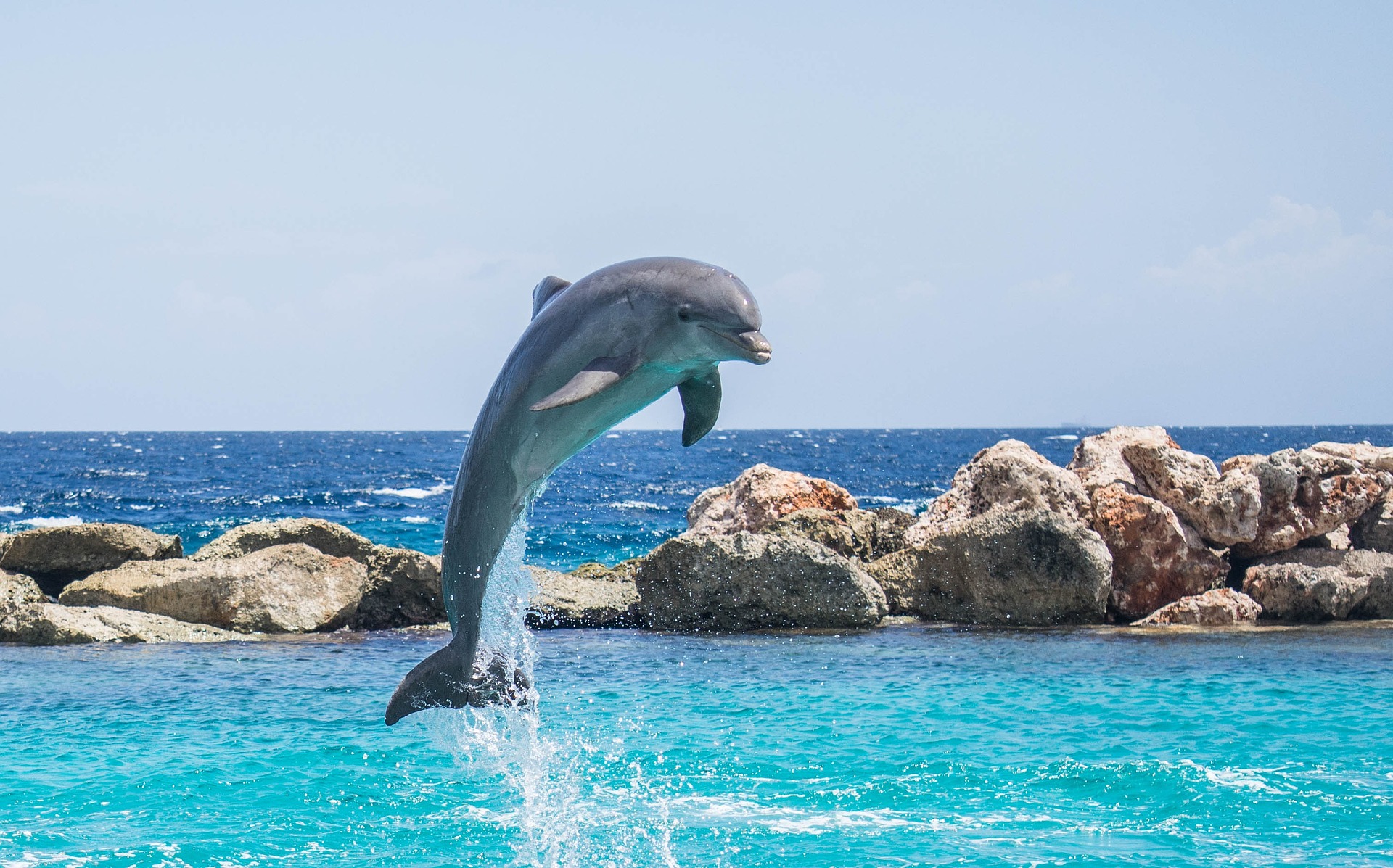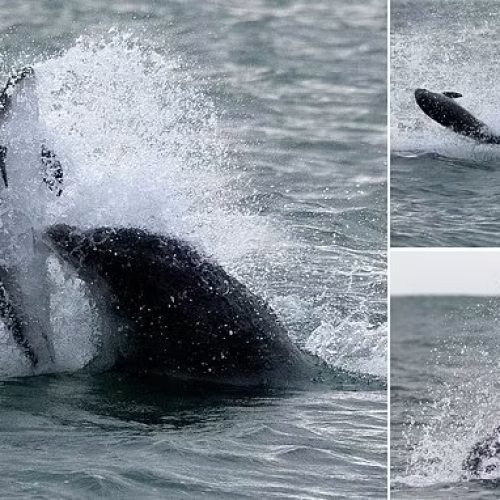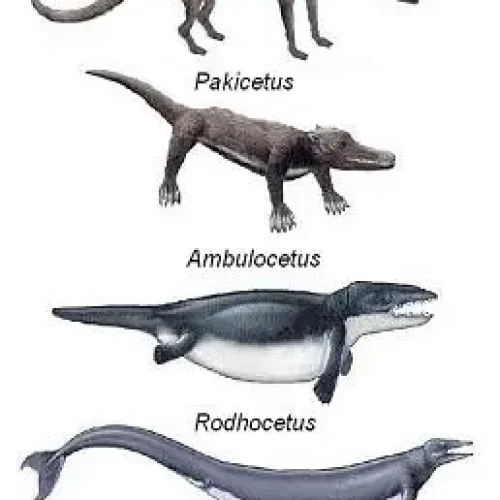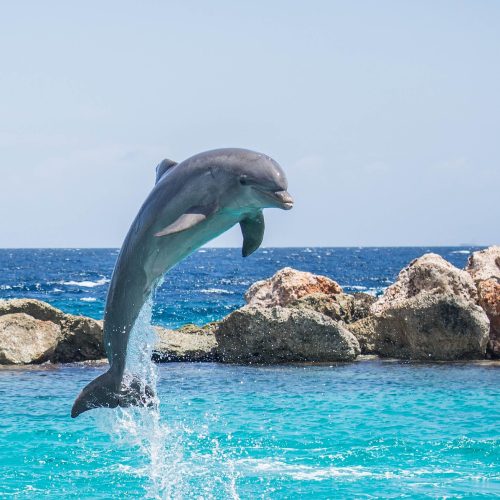In this article
SPLITTING THOUGHTS: THE DUAL NATURE OF DOLPHIN BRAINS
Dolphins, those enigmatic marine mammals, have long fascinated scientists and nature enthusiasts alike.
Their remarkable intelligence and complex social behaviors have led many to wonder about the inner workings of their brains.
While dolphins don’t possess two separate brains, their cerebral structure and functions are indeed unique, allowing them to perform feats that seem almost supernatural to us land-dwelling humans.
The basics of dolphin brain anatomy
Diving into dolphin neurology, we find a brain that’s both familiar and alien. In terms of sheer size, dolphin brains are impressive.
The average bottlenose dolphin boasts a brain weighing around 1.5 to 1.7 kg, surpassing the human brain’s typical 1.3 to 1.4 kg. However, size isn’t everything when it comes to cognitive power.
Like humans, dolphins have two cerebral hemispheres.
These halves are connected by a structure called the corpus callosum, which facilitates communication between them.
What sets dolphin brains apart is their highly convoluted neocortex – the outer layer responsible for higher-order thinking.
This wrinkled surface provides more area for neural connections, potentially contributing to their renowned intelligence.
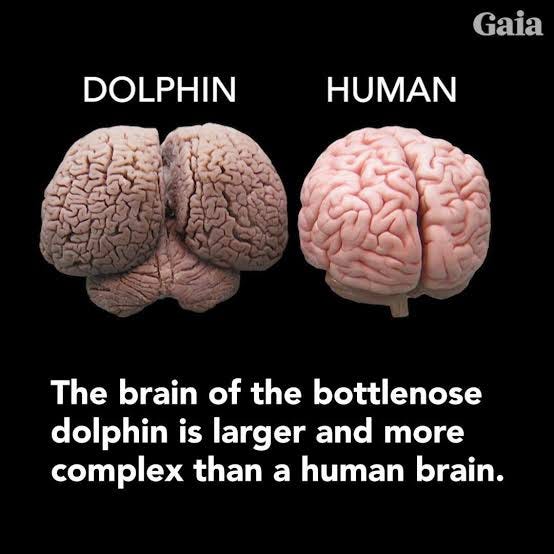
Unihemispheric slow-wave sleep: Resting one half at a time
Perhaps the most intriguing aspect of dolphin neurology is their ability to engage in unihemispheric slow-wave sleep.
This remarkable adaptation allows dolphins to rest one hemisphere of their brain while keeping the other alert.
Here’s how it works:
• One hemisphere enters a sleep-like state
• The opposite eye remains open, connected to the awake hemisphere
• The awake side controls breathing and monitors the environment
• After a period, the hemispheres switch roles
This sleep pattern offers clear evolutionary advantages. Dolphins can remain vigilant for predators, continue swimming to avoid drowning, and even navigate during long migrations.
It’s a testament to the brain’s plasticity and the incredible adaptations that arose as these mammals transitioned from land to sea over millions of years.
The implications of unihemispheric sleep on dolphin consciousness are profound.
Some researchers speculate that this ability might allow dolphins to maintain a form of awareness even during rest periods.
It raises fascinating questions about the nature of dolphin cognition and their perception of the world around them.
While dolphins don’t literally have two brains, their cerebral structure and functions are undoubtedly unique.
From their large, convoluted brains to their ability to sleep with half their mind awake, these marine mammals continue to surprise and inspire us.
As we delve deeper into the mysteries of dolphin neurology, we’re sure to uncover even more amazing insights into the power and potential of the brain.
COGNITIVE POWERHOUSES: DOLPHIN BRAIN FUNCTION
Intelligence beyond measure
Dolphins consistently astound researchers with their remarkable problem-solving abilities.
These marine marvels have been observed using tools, a behaviour once thought unique to primates. In Shark Bay, Australia, bottlenose dolphins use sponges to protect their sensitive snouts while foraging on the seabed.
This innovative technique, passed down through generations, showcases their capacity for cultural learning and adaptation.
Social cognition in dolphins rivals that of many primates.
They form complex alliances, remember past interactions, and even hold grudges. Studies have shown that dolphins can recognize themselves in mirrors, a hallmark of self-awareness shared by only a handful of species.
This ability suggests a level of introspection and personal identity previously underestimated in marine life.
Decoding dolphin chatter
The underwater world of dolphin communication is a symphony of whistles, clicks, and body language.
Each dolphin possesses a unique “signature whistle”, essentially its name, used to identify and call out to others.
This sophisticated system allows individuals to maintain contact even in murky waters or over long distances.
But dolphin vocalizations go far beyond simple identification. Their language includes a vast array of sounds, each potentially carrying specific meanings.
Some researchers believe dolphins may even possess a grammatical structure in their communication, though this remains a topic of heated debate in the scientific community.
Current research in France, supported by a 2,5 million euro grant from the European Research Council, aims to decipher more of the dolphin communication code.
Using advanced underwater microphones and artificial intelligence, scientists hope to crack the secrets of dolphin “language” and potentially open up new avenues for interspecies communication.
NEUROPLASTICITY AND ADAPTATION: THE FLEXIBLE DOLPHIN MIND
Brain adaptations for aquatic life
Evolution has equipped dolphins with a sophisticated neurological arsenal for navigating and surviving in the oceans.
Echolocation, their sixth sense, is a prime example. Their brain processes complex acoustic information in real-time, creating a detailed image of their surroundings.
This ability relies on hypertrophied brain regions dedicated to auditory processing.
Sensory integration in dolphins is equally impressive. Their brain fuses visual, auditory, and tactile data to form a coherent perception of the underwater world.
This sensory synergy allows them to hunt efficiently, communicate, and interact socially in conditions where visibility is often limited.
Faced with the thermal challenges of the oceans, the dolphin brain has developed ingenious thermoregulation mechanisms.
A complex network of blood vessels, called the rete mirabile, acts as a heat exchanger, maintaining optimal brain temperature even in warm waters.
This adaptation protects their cognitive functions and allows them to remain active in various marine environments.
Learning and memory: The dolphin’s impressive recall
The learning and memorization capacity of dolphins defies imagination. Their long-term memory is particularly remarkable.
Studies have shown that dolphins can recognize the signature whistles of their conspecifics after years of separation.
This social aptitude underscores the importance of memory in their complex community structure.
Rapid learning is another key feature of dolphin intelligence. They assimilate new behaviors with astonishing ease, whether in their natural habitat or in captivity.
This cognitive flexibility allows them to quickly adapt to new situations, a crucial asset in an ever-changing oceanic environment.
Cultural transmission in dolphins testifies to their cognitive sophistication. Learned behaviors, such as tool use for hunting, spread within populations.
In Shark Bay, Australia, some dolphins use marine sponges to protect their rostrum when foraging on the seabed, a technique passed down through generations.
• They memorize specific whistles for years
• Their rapid learning facilitates adaptation to new challenges
• Cultural transmission enriches their behavioral repertoire
The exceptional neuroplasticity of dolphins, coupled with their learning and memorization abilities, illustrates the remarkable evolution of their brain.
These adaptations allow them not only to survive but to thrive in the blue immensity.
By studying these extraordinary creatures, we continue to push the boundaries of our understanding of animal intelligence and the potential of the mammalian brain.

